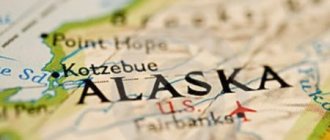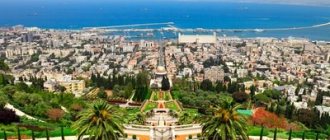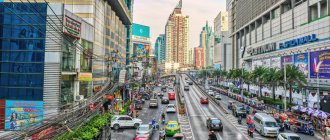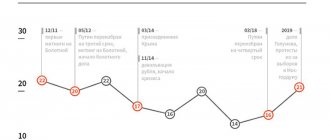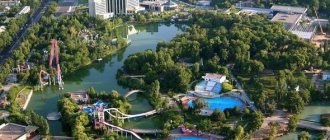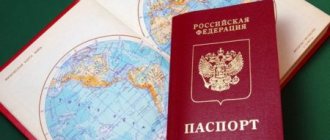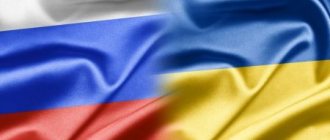The process of internal migration of citizens is not always forced. In some cases, taking into account the interests of the development of individual regions, the state resorts to measures that are designed to stimulate the desire of the country's residents to move to one or another part of Russia. One of such projects is considered to be a resettlement program for Russians in the Far East, which provides comprehensive assistance to those who have decided to change their lives radically and in new conditions.
Briefly about the resettlement process
In terms of migration legislation, the movement of citizens outside their usual area of residence is usually divided into two groups:
- external;
- internal.
Persons from the first category move outside their state and, for the most part, change citizenship. Those who are not ready for such drastic changes simply change their place of residence to another region of the Russian Federation. Such migrants are called internal and are also divided into two groups - forced and voluntary.
In the first case, the reason for the move is force majeure circumstances - epidemics, emergencies, environmental disasters, in the second - migrants independently decide to change their place of residence due, for example, to economic reasons (lack of opportunity to find work and realize their professional potential). Alternatively, they can take part in the government program and move to regions that are prioritized for settlement, while receiving certain bonuses and support.
The essence of the resettlement program
The project was developed back in 2012, in 2013 it was given the status of an indefinite period, it is designed to attract migrants to the farthest corners of our homeland. Already at the very beginning it was assumed that its participants would be both university graduates who were just starting their working careers, and those who had already formed as specialists.
Goals and conditions of the program
According to the document adopted 5 years ago, the regions that take part in the program have agreed to do their best to assist citizens who have decided to make such fundamental changes in their lives.
So what the rules say:
- Only certain categories of citizens can become participants;
- resettlement is possible only in those parts of the Russian Federation whose authorities have expressed a desire to accept migrants;
- all candidates must document their belonging to one of the categories allowed to participate in the project;
- applicants can move with their entire family;
- program participants will not be able to change their region of residence within two years after settling in it, otherwise, by law, all funds spent on them will be withheld from them.
The main objective of the implemented project is to enable the regions of the Far East to become competitive subjects of the Russian Federation with developed social policy, industry and an improved demographic situation.
The main project includes several programs that are closely intertwined with a common design. Most of them are designed for the period until 2025. According to expert estimates, the implementation of these projects will allow:
- accelerate the growth of economic indicators;
- increase the number of investments in business and industry of the participating regions;
- improve transport provision and infrastructure;
- increase the number of citizens;
- promote the integration of the northern regions into the social life of the country as a whole.
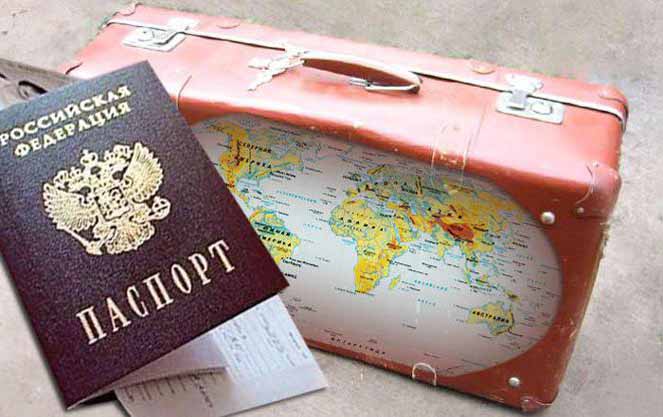
Requirements for participants
The conditions for resettlement to the Far East do not really limit the categories of citizens who can declare their participation, while both Russians themselves and foreigners who migrate under the Compatriot program can apply for participation.
There are not too many requirements for Russian candidates, so the program is available to different categories of people.
The authorities are interested in the regions being developed by able-bodied citizens, therefore the federal program to support resettlement to the Far East is designed primarily for young or experienced specialists. The greatest support is provided to families that have an able-bodied head under the age of 35; educated youth are also welcome.
The most popular in the regions that participate in the program are:
- shipbuilding workers;
- general workers;
- teachers;
- doctors;
- miners;
- engineers in various fields of economics;
- electric and gas welders;
- tractor drivers;
- fish processors.
Please note that the list of priority professions is compiled individually for each region.
Where to contact regarding relocation to the Far East
Work issues are dealt with by Rostrud - the Federal Service for Labor and Employment: rostrud.ru You can go to the official website and consult a toll-free number:

You can also contact the MFC, use the State Services website gosuslugi.ru , or directly contact the administration at your place of residence. Specialists from any organization can advise on further actions in each specific case.
Foreigners need to contact the Russian consulate in their country of residence. They will also explain exactly what list of documents you need to collect in order to apply for relocation to a place of work in the Far East and receive allowances.
The adoption of new amendments to the law, which will increase the size of the lifting allowances, are necessary measures to attract people to new places of work, where there is actually work! This will also take the pressure off regions where unemployment is high simply because everyone is rushing to regions that are already overcrowded with labor.
These are large cities such as Moscow, St. Petersburg, Voronezh, Rostov-on-Don, Krasnodar... In cities with a population of over a million, there is a problem with available jobs . The state understands this and makes improving decisions so that people in all corners of the country can live well.
How to become a participant in the program
All powers regarding the issue of resettlement to remote regions of the Russian Federation within the framework of a government project are vested in the Main Directorate for Migration Issues of the Ministry of Internal Affairs.
Russian citizens can apply:
- to the territorial department of the Main Directorate for Migration Affairs of the Ministry of Internal Affairs;
- in the MFC (only in some regions);
- to the Gosuslug portal.
Preparing documents
The contents of the package of required papers will depend on whether one participant or his entire family is applying. It is clear that in the second case, you will have to prepare a large number of documents, since it is impossible to move to the Far East under the state resettlement program in 2021 without them.
The set of necessary documents includes:
- Statement.
- Civil passport for each family member over 14 years of age.
- Birth certificates of all children who have not yet reached adulthood.
- Documents about the education received (for all family members).
- Marriage certificate/divorce certificate.
- Any papers that act as evidence of relationship with other family members.
- Certificates of no criminal record.
- Work records of all working family members.
The entire package of documents must be submitted to the employment commission, which reviews them within a month and offers the applicant several options for relocation. The candidates' profession has a huge influence on the decision.
Participating regions
The next thing you need to know is what part of Russia this program can take you to.

To date, the following constituent entities of the Russian Federation have announced their participation in it:
- Tyva Republic;
- The Republic of Buryatia;
- Kamchatka Krai;
- The Republic of Sakha (Yakutia);
- Khabarovsk region;
- Transbaikal region;
- Irkutsk region;
- Primorsky Krai;
- Sakhalin region;
- Amur region;
- Chukotka Autonomous Okrug;
- Magadan Region;
- Jewish Autonomous Region.
Primorsky Krai and Khabarovsk Krai are the most popular among immigrants.
Medvedev allowed to issue a million for moving to the Far East
Primorsky Krai was included in the list of regions of Russia that in 2019 will be able to receive subsidies for additional activities in the field of employment. The corresponding resolution was signed by Prime Minister Dmitry Medvedev.
The new edition of the rules for the provision and distribution of subsidies to the constituent entities of the Federation for additional activities in the field of employment will come into force on January 1, 2021. Funds from the federal budget will be allocated to the regions to create attractive conditions for relocating workers and securing them in the workplace.
Among the innovations, the possibility of participation in regional programs for all employers who are in need of labor resources has been established. Previously, participation was provided only for employers implementing investment projects.
“For employers in the Far Eastern Federal District, an increase in the amount of financial support is provided from 225 thousand rubles. up to 1 million rubles for each attracted employee,” the document says.
The list of regions that can count on a subsidy includes Primorsky Krai. Funds will be provided, among other things, to compensate for the employee’s travel expenses, his arrangement, rental housing, and training.
In the federal budget for 2021 and for the planning period 2021 and 2021. 800 million rubles are provided for co-financing of regional programs. It is expected that these measures will make it possible in 2021 to provide support for the relocation for employment of more than 900 people, including to enterprises in the Far East.
Programs to increase labor mobility operate in all regions of the Far East, with the exception of Yakutia and the Jewish Autonomous Region. The employer must meet a number of criteria: not work through offshore companies, pay wages, taxes and insurance premiums on time, and enter into formal employment contracts with employees. The program does not apply to the company as such, but to its investment projects for which it attracts people. The enterprise must submit an application to the regional administration, indicate the number of people, describe the social, economic and tax effect of the project. Employers cannot receive money for any visitor - the employee must come from a region where there is no shortage of personnel. According to the Ministry of Labor, there are 16 regions with a shortage of personnel: seven regions and territories of the Far East, as well as the Arkhangelsk region, Krasnoyarsk region, Novosibirsk, Kaluga regions, etc. The employee is required to work in a new place for at least three years; if he resigns of his own free will earlier, he must return the subsidy.
According to the Agency for the Development of Human Capital in the Far East (ARCHK DV), in 2016–2017. Only 44 employers took advantage of the program. In 2015–2017 the authorities planned to transport about 6,500 workers to 16 regions, but it turned out to be five times less - 1,162. According to the plan, about 2,500 people were supposed to move to the Far East under the program, but in fact there were 650 of them.
Financial assistance
The federal program to support resettlement to the Far East provides several types of assistance for those who decide to start a new life in harsh regions. The first thing migrants can count on is, of course, financial assistance.
To date, fixed payments have been established, which all families are required to receive when moving to the Far Eastern region and getting a job in a priority area:
- a program participant under 35 years of age and his family upon relocation can receive a payment in the amount of 200 thousand rubles for the main applicant and 120 thousand rubles for each of his relatives who moves with him;
- a young specialist or recent university graduate will receive 800 thousand rubles;
- qualified specialists over 35 years of age can receive a payment in the amount of 400 thousand rubles.
The program of Dalniy - ours
At the end of June, President Vladimir Putin instructed the government to develop long-term steps for the development of this region of the country. The need for the program was dictated by the socio-economic situation of the Far Eastern territories. On the one hand, there is a wealth of natural resources, scientific infrastructure and industrial base. On the other hand, the population's living standards are poor. Thus, over 27 years, the population has decreased by 1.3 times - to 8.2 million people in 2021. There is a significant lag from the Russian average in key social indicators, as well as a low provision of transport and social infrastructure. The share of dilapidated and dilapidated housing is 2.5 times higher than the national average, and the commissioning of new housing is 1.5 times lower.
Back in 2013, the program emphasizes, the head of state declared the development of the Far East a national priority for the entire 21st century. “The mission of the new state policy is to create globally competitive conditions for investing and doing business in the Far East, thanks to which the private investments necessary for its rapid economic development will come to the region, and behind them - new jobs and a new quality of the social sphere, creating attractive living conditions people and increasing the number of economic ties within the region,” the document says.
The president established specific tasks by decree. For the period up to 2024 inclusive:
— exceeding the average Russian growth rate of indicators of the quality of life of the population, including in such main areas as increasing life expectancy by at least 5 years, reducing the mortality rate of the working-age population by at least 35 percent, increasing the annual volume of housing construction by 1, 6 times;
— exceeding the average Russian growth rate of economic development indicators, including by increasing the volume of accumulated private investment to 800 billion rubles, creating at least 200 enterprises in priority development areas and in the free port of Vladivostok, as well as at least 30 thousand new jobs.
By 2035, the government and regional authorities must stop the migration outflow of the population, achieve for the territories indicators of the quality of life of the population and economic development above the Russian average.
The implementation of the national program will take place in three stages: from 2021 to 2024, from 2025 to 2030 and from 2031 to 2035. It is planned to approve a separate action plan for each of them. Financing will be provided from the federal budget, consolidated budgets of the Far Eastern regions and extra-budgetary sources.
As a result, by 2035 in the Far East:
— will create at least 450 thousand new jobs;
— to ensure comfortable living conditions for people in the largest cities, they will launch programs for the renovation of the urban environment, public spaces and road networks, including the relocation of large industrial and logistics facilities from city centers;
In the education system, at the first stage, 57 schools will be built and reconstructed
— will provide large-scale support for individual housing construction in the suburbs and rural settlements, construction of infrastructure for new settlements created within the framework of the “Far Eastern Hectare” program;
— will provide aviation accessibility and access to high-speed Internet for all remote settlements;
— new tourism clusters will be created in each of the 11 regions of the Far East;
— will develop the production and transport potential of the territories.
All areas of socio-economic development are separated into separate blocks with their own parameters and goals. A large section is devoted to improving the quality of life to a level above the Russian average, including the development of human capital, personnel potential and the creation of a comfortable living environment.
To develop the healthcare system by 2024, it is planned to:
— construction and reconstruction of 460 institutions, including 260 paramedic and obstetric stations and medical outpatient clinics located in adapted premises;
— major repairs of 1006 medical organizations;
— acquisition of 189 units of medical equipment;
— equipping medical organizations with 143 mobile medical complexes;
Starting from 2025, construction of another 570 paramedic and obstetric stations and medical outpatient clinics in adapted premises will begin, major repairs of 188 medical organizations, the purchase of 9,095 units of medical equipment and 218 digital fluorographs, as well as renewal of the emergency medical vehicle fleet in the amount of 1,214 units of equipment.
In the education system at the first stage:
— 57 schools will be built and reconstructed;
— 134 general education and 215 professional educational organizations will undergo major repairs;
— 34 schools will be equipped with catering units;
— will provide doubled compensation payments to teachers who come to work in rural settlements, workers’ settlements, urban-type settlements and cities with a population of up to 50 thousand people.
After 2024, it is planned to overhaul another 834 general education and 138 professional educational organizations, and equip 59 professional educational organizations.
The action plan to improve the living conditions of the population of the Far East includes:
— mortgage at 2 percent per annum for young families and participants of the Far Eastern Hectare program;
— issuing mortgage loans at 5 percent per annum for citizens with children, as well as providing mortgage loans for the purchase of housing in rural areas at an interest rate of 0.1 to 3 percent;
- increase in the volume of housing construction by 1.6 times - up to 3.3 million square meters per year;
— reducing the number of unsuitable residential premises, as well as apartment buildings recognized as unsafe and subject to demolition or reconstruction, by 3.5 times and the resettlement of 1.7 million square meters of such housing;
— improvement, increasing the level of provision of public and recreational spaces, creating a new look for Far Eastern cities;
— implementation of wooden house construction projects.
Its own action plan is prescribed for the spheres of culture and sports. Moreover, it is specifically determined which facilities should be built in populated areas depending on their population. For example, in every rural settlement with a population of 500 or more residents, a cultural center will be opened, and if there are more than three thousand residents, then a cinema hall is already needed. In settlements with 1000-5000 residents, universal gyms will appear, and swimming pools are provided for settlements of 10 thousand people or more.
Meanwhile
The government has approved the Development Strategy for the Immunoprevention of Infectious Diseases for the next 15 years, Prime Minister Mikhail Mishustin said at an operational meeting with his deputies. “The situation with coronavirus has once again confirmed the importance of developing this area,” he emphasized. “We must take measures to keep existing infections under control and prevent new ones from spreading.” By 2025, on the basis of Russian enterprises, a full cycle of production of vaccines for vaccinations included in the national calendar of preventive vaccinations and the vaccination calendar for epidemic indicators should be provided.
The strategy is focused on immunoprophylaxis of a number of infections, such as diphtheria, measles, rubella, viral hepatitis B, and seasonal influenza. By 2035, population coverage with preventive vaccinations should be at least 95 percent.
Social support
It is quite logical that the payment of cash benefits alone is not a very attractive incentive for resettlers. This led to the fact that the Russian government had to develop a number of activities that could increase citizens' interest in the new project.
Today, moving to the Far East under the resettlement program promises participants the following social benefits:
- provision of jobs in the existing specialty;
- subsidy for obtaining a mortgage (10% of the cost of housing);
- partial payment of costs for the construction of new housing;
- provision of temporary residence;
- the opportunity to receive education under special conditions and a guarantee of further employment.
Do not forget that each region has also developed individual programs that take into account the needs of new arrivals.
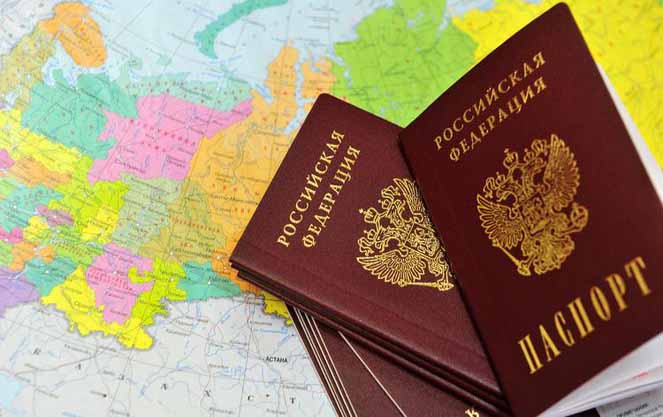
Foreign countrymen
Over the five years of implementation of the targeted “State Program to Assist the Voluntary Resettlement of Compatriots Living Abroad to the Russian Federation,” about 400 families wished to come to the Far Eastern territories and regions. This is a rather modest result of a well-funded project. RG correspondents found out why this program was stalling.
My house
The main problem is the lack of housing for potential migrants. Few qualified specialists, and these are the people the Far Eastern Federal District needs, will go to improve the region if it cannot provide them with an apartment or house.
In 2008, a long-term target program was developed in the Amur region “Providing assistance to the voluntary resettlement of compatriots living abroad to the Amur region for 2009-2012.” Two areas of residence have been identified: Tambov and Shimanovsky districts with the city of Shimanovsk.
The region can accommodate 772 people, but there are incomparably fewer displaced people.
According to the Ministry of Foreign Economic Relations, Labor and Consumer Market of the Amur Region, since 2007, 31 families (80 people) have come to the region. Of these, four people returned to Ukraine and Kazakhstan because they were not satisfied with either work or housing.
This situation cannot satisfy the regional government. Therefore, significant changes were made to the program for the resettlement of compatriots.
“We have decided to implement a new pilot project,” says the acting director. Minister of Foreign Economic Relations, Labor and Consumer Market of the Amur Region Olga Lishtaeva. — Construction of five prefabricated two-apartment houses for immigrants from Ukraine and Kazakhstan begins. They will be ready by October.
The regional government intends to rent this housing to program participants who will be engaged in agriculture. After a ten-year period, the migrant will have the opportunity to purchase it as property, provided that he works on peasant farms. The Amur region is vitally interested in the emergence of a qualified workforce in the agro-industrial complex of the region and the development of peasant farms. Participants in the resettlement program working in peasant farms are guaranteed financial assistance from the budget. This money will be used to build production facilities and purchase feed.
In addition, now migrants in the Amur region will be able to live and work not only in two districts, but throughout the entire region.
Preferences are necessary
Since 2007, 71 participants in the resettlement program and 78 members of their families have arrived in the Khabarovsk Territory. By 2012, it was planned to accept 1,461 participants, but it is already clear that it is unlikely that the plan will be fulfilled.
“Our region is unattractive for migrants,” says Natalia Makarenko, deputy head of the department for citizenship, compatriots, forced migrants and refugees of the Federal Migration Service of the Russian Federation for the Khabarovsk Territory. — First of all, because it is impossible to provide housing for new arrivals. There are people who want to go where the company is ready to provide apartments. Otherwise, the vacancy remains open. For example, a local doctor is required in Komsomolsk-on-Amur. Only a place in a dormitory is provided. What family person would agree to these conditions?
In addition, in order for a visiting doctor to practice, he must confirm the equivalence of his diploma by completing courses at a local medical university. Their cost exceeds 70 thousand rubles, which no one will reimburse the displaced person. There was a case in Khabarovsk when a doctor who arrived from Uzbekistan under the resettlement program was unable to pay this money and now works as a laboratory assistant.
Immediately upon arrival, migrants are paid lifting funds: 120 thousand rubles for each participant in the program and 40 for members of his family.
The cost of sending containers and transportation costs, as well as duties paid, will be reimbursed. The procedure for obtaining a Russian passport is extremely simplified. The latter, by the way, is almost the only thing that attracts many compatriots.
Mostly migrants come from Ukraine, Armenia, Kyrgyzstan, and Kazakhstan. Although there were cases - the Khabarovsk Territory received compatriots even from Canada, Israel and Germany. As a rule, these are people who once left our region, and now they have the opportunity to return to their native lands.
Of all the territories of settlement, new arrivals, of course, give preference to the regional center - 38 compatriots and 41 members of their families remained to live here. 23 people settled in Komsomolsk-on-Amur, Amursk and Solnechny, including 12 participants. A total of 19 displaced people with 45 family members found Vyazemsky, Nikolaevsky and Khabarovsk districts attractive. Nobody wanted to go to the Vaninsky district.
Employees of the regional Federal Migration Service plan to more actively attract new participants to the program. A film about the Khabarovsk Territory on the topic “How We Live” was created especially for showing to future migrants, with which migration service specialists will travel to other countries for presentation. Attempts continue to resolve the issue of providing housing. According to the head of the Federal Migration Service for the Khabarovsk Territory, Andrei Barakhtin, a solution to this problem could be the organization of temporary accommodation centers. So far in the Far East the only such center is in Khabarovsk. It is here that the newly arrived migrants are accommodated. Also, the head of the regional Federal Migration Service believes that preferences are needed for employers who are ready to hire compatriots, for example, the introduction of tax benefits.
The land of unfulfilled hopes
In the Primorsky Territory, the target program “On providing assistance to the voluntary resettlement of compatriots living abroad” provides for the resettlement of 14,888 people, 3,722 of whom will be direct participants in the program. However, in reality, there were ten times fewer people willing to move to Primorye. The Department of the State Employment Service of the Territory received only 420 applications, and even fewer arrived - 69 program participants and 90 members of their families.
Mainly residents of Ukraine, Kazakhstan, Uzbekistan, Armenia and Kyrgyzstan want to become “new Primorye residents”. Less than half of them graduated from universities, a third write “secondary specialized” in the “education” column. The rest have only school behind them.
Of course, such people are unlikely to be able to satisfy the personnel shortage in Primorye.
— There is a shortage of teachers and doctors in the outback, and there is also a shortage of construction workers in Nakhodka. Fishing companies constantly turn to us in search of crew, and fish processors are looking for specialists. “We don’t have enough people at all,” Evgeniy Makarov, head of the Primorsky Territory State Public Health Service, throws up his hands.
But displaced people are not the people Primorye is waiting for.
“In fact, we are getting a very complex human resource,” continues Makarov. “These people didn’t succeed there, and they come to us for a better life, but at the same time they don’t want to work.” And employers, in turn, learned from bitter experience, are in no hurry to offer better places to visitors.
But, on the other hand, it would be strange to expect an influx of highly qualified specialists to positions that Evgeny Makarov characterizes as “low quality” vacancies.
According to the official, many citizens from the former Soviet republics do not come at all to settle down in the region and improve their lives here. They are only interested in one thing - Russian citizenship. Having received it, they go home, having the opportunity to return at any time to earn money, without any bureaucratic problems.
Obtaining Russian citizenship is the main thing that attracts migrants to the Far East
If we analyze the data on the progress of the program in other regions of the country, it will become clear that Primorsky Krai is one of the last places in terms of attractiveness. The first, by the way, is stably held by the European enclave of Russia - the Kaliningrad region. Specialists of the Primorye Employment Service admit that the region is unlikely to achieve such popularity among compatriots, but it is necessary to increase its competitiveness among other regions.
One of the measures is to provide temporary housing to compatriots. Since 2007, more than 30 million rubles have been allocated for the renovation of dormitories owned by companies providing work and municipal real estate. In 2010 this figure will be 10 million.
True, not all of this money will be used to tidy up square meters. A portion will be spent on information support for the program.
— This includes trips directly to countries where the main flow of applications for resettlement comes from. Our representatives will meet with potential resettlers on site, tell them about the region, the development of production and industry. About 100 thousand are planned for videos and visual materials for presentations of places of resettlement, the Primorye Employment Service said.
What benefits can participants expect?
In addition to the fact that the state provides financial and social support, program participants can receive a number of benefits in other most important issues of adaptation to a new place, these include:
- exemption from payment of registration fees;
- moving to a new place of residence at the expense of the state, regardless of what type of vehicle is chosen;
- provision of a container for a family of three people, in which up to 5 tons of things can be transported; for larger families, a container of up to 10 tons is allocated;
- payment of unemployment benefits for the first 6 months, the amount of which is the cost of living in a given region;
- allocation of land free of charge.
Difficulties to be aware of
Despite the many advantages and benefits that the program provides, it cannot be called flawless. There are a number of difficulties that migrants have to overcome. They are the reasons why the number of residents in the designated regions is significantly less than the Russian government expected.
The biggest problem today is the issue of housing. To solve it, the authorities of some regions are launching special projects for accelerated construction. It is assumed that the new residential space will be rented to “newcomers”. The authorities promise that the price will be reasonable and justified. Subsequently, if such a desire arises, the family will be able to buy an apartment or a residential building.
The second problem is related to employment. Those who decide to move are mainly those who have received a specialized secondary education or do not have any diploma at all. At the same time, the regions need high-level specialists, and it is very difficult to lure them here, since the level of wages does not meet the expectations of professionals.
Very often, a big obstacle to the implementation of a project is local officials, who, by the nature of their activities, are obliged to take care of the provision of housing, ensure employment, and create conditions for retraining, but their words often differ from their actions.
